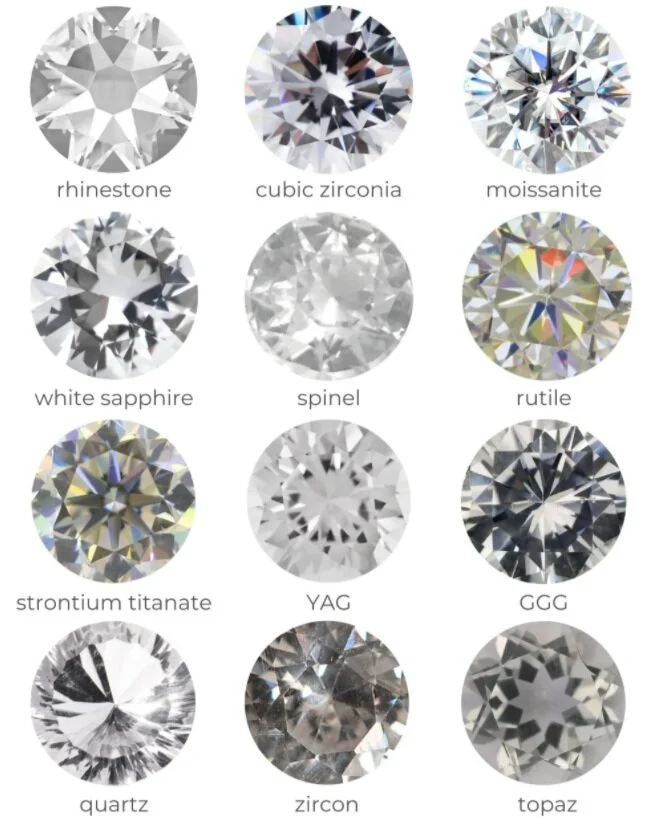Diamond Simulants
Diamond Simulants
While the appearance of diamond simulants is similar to that of natural diamonds, they are not diamonds. Common diamond simulants include Yttrium aluminum garnet (YAG), cubic zirconia (CZ), and Moissanite all of which are completely unrelated to diamond at the atomic level.
Simulants are, of course, less expensive than the real thing. They allow consumers to enjoy the flash and dazzle of diamond-like jewellery and to inexpensively complement the latest fashion trend. But no matter how convincing the illusion, all diamond simulants have optical and physical characteristics that can be identified by a trained gemologist.
Yttrium aluminum garnet (YAG) is a lab created gem first developed in the 1950's. Its primary application was in optics and laser technology, but it turned out to be a convincing diamond simulant. Although YAG has garnet in its name, it is not related to garnet; it is an artificial gemstone with no natural counterpart.
Cubic zirconia is a much less expensive man-made gem that appears quite like a diamond, but they are very different. Cubic zirconia is a manmade mineral made of zirconium dioxide. CZs can appear to be very like diamonds, but they have very different mineral structures.
Moissanite is made of silicon carbide. Natural moissanite is incredibly rare, so moissanite available today is laboratory-created. After many years of trial and error, the particles Moissan discovered were successfully synthesised to produce what is now one of the world’s most scintillating gemstones. Moissanite is engineered to give the illusion of similarity to diamonds, but is compositionally and visually quite different from a real diamond. The durability, brilliance, and colour of the two gems are quite distinct.

